When I go to a museum, I expect to find paintings by old dead guys.
The older the better.
The Teshima Art Museum, however, has no paintings, and the art which you will find within it is neither old nor dead in the strictest sense of the word.
Despite all that, it is the single most impressive art installation I have ever had the extreme fortune to experience.
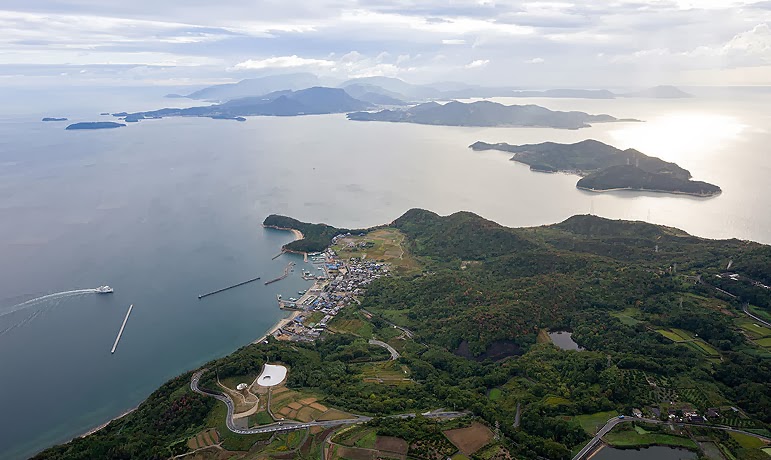 |
| Arial view of the Teshima Art Museum Photo: Iwan Baan Photography |
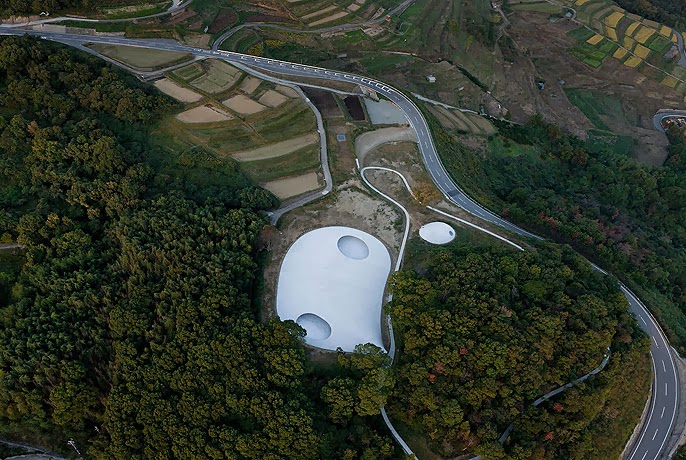 |
| The Museum, circumvallated by the Road of Epic Ass Hauling. Photo: Iwan Baan Photography |
The approach to the museum starts off rather unexpectedly to begin with. Everything seems very sleek, minimalist, and ultra modern.
Totally stripped down. Bare bones.
This is the ticket counter.
They have brochures for the exhibit in English and Japanese.
I was actually given a Japanese one by mistake, and thus received a unique opportunity to utilize my super polite Japanese phraseology. “Kore wa eego jya nai deshyou ka?” I said, literally meaning, “This (one) at least, isn’t it not English?”
This is extremely indirect, and in Japan, the more indirect and vague you can be, the greater your politeness. This is why the super polite characters in games and anime speak primarily in ellipses. The receptionist apologized profoundly, and exchanged my Japanese brochure for an English one.
A+!
In retrospect, one of the many things which I appreciated about this museum was the fact that there was very little by way of explanation in either English or Japanese, even within the brochure. You get to experience the museum without your thoughts having been pushed in any specific direction. They just left the art to speak for itself.
And it does.
A narrow, unadorned path winds around the museum grounds toward the exhibit. Beneath us descended the stepped farmscape, and epic hillside road down which I had so recently blazed.
The museum and gift shop structures both stand unobtrusively within the landscape—low, white teardrop shapes, curving smoothly.
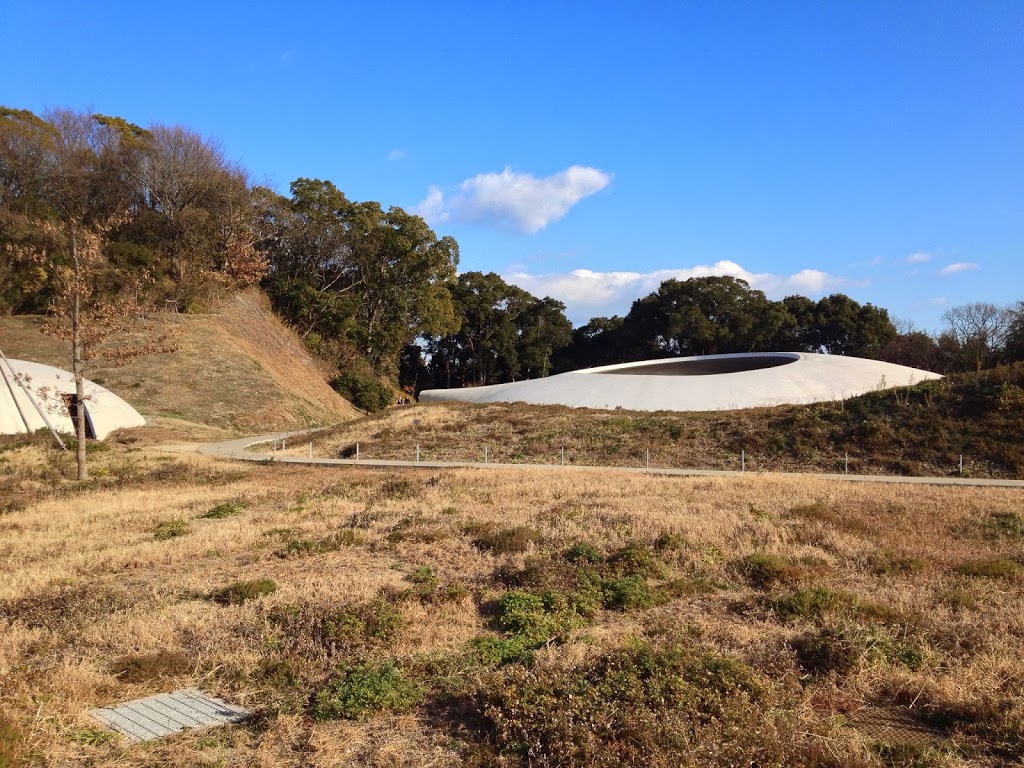 |
| The Museum |
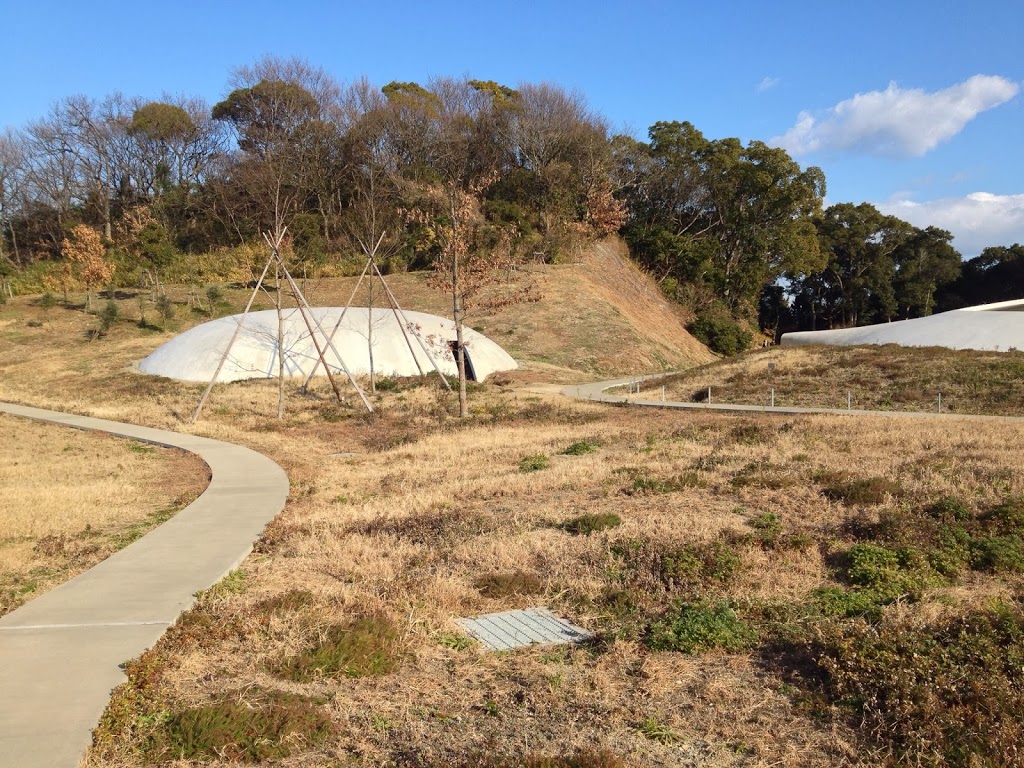 |
| The Gift Shop |
The path wraps around the side of the hill, with sleek benches carefully situated to invite quiet contemplation.
Everything was sort of barely there—and yet unmistakably deliberate. At no point did any of the designs compete with the natural landscape in any way.
We rounded the bend, and approached the entrance to the museum.
Here an attendant politely instructed us to remove our shoes and, of course, to select from a bin a pair of slippers.
As fortune had it, they even had some in my giant, honkie size!
Yata ne!
Shoe removal ain’t no thang in Japan, but the next part of her instructions set a different tone.
“No photography,” we were instructed, “and no talking,” she added. She gave these instructions in Japanese and in English.
Furthermore, as I was the jingly-jangly crustpunk in our group, she instructed me specifically to remove those portions of my outfit which made noise, those being one of my two belts, my buttflap, and my industrial strength chain wallet.
Of course, she apologized to me repeatedly, even as I assured her it was no problem. “Daijyoubu, daijyoubu… It’s alright.”
Mega-polite is just how the Japanese do!
In complete silence, we walked around the corner, and entered the museum.
What happened next is rather difficult to describe, but entering the museum there was only one piece of art—and we were standing in it.
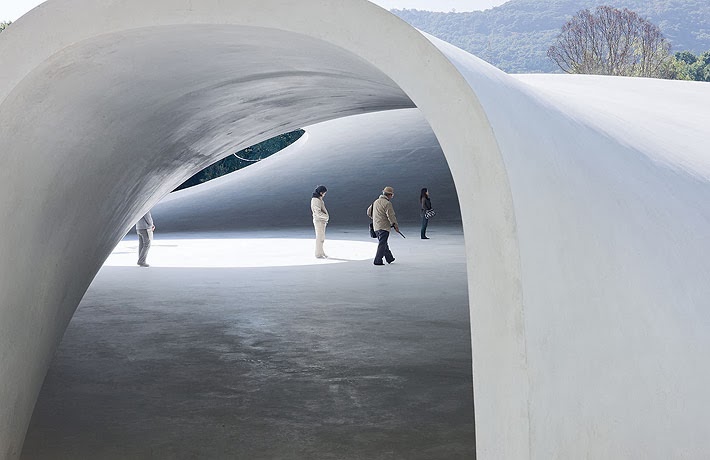 |
| Photo: Iwan Baan Photography |
The Teshima Art Museum consists of a smooth, white chamber with one entrance/exit, and two large openings situated at either end of its asymmetrical, oblong shape.
“Okay,” you may be thinking, “a big white room… So what?!”
So, several things.
First, there’s the ribbons.
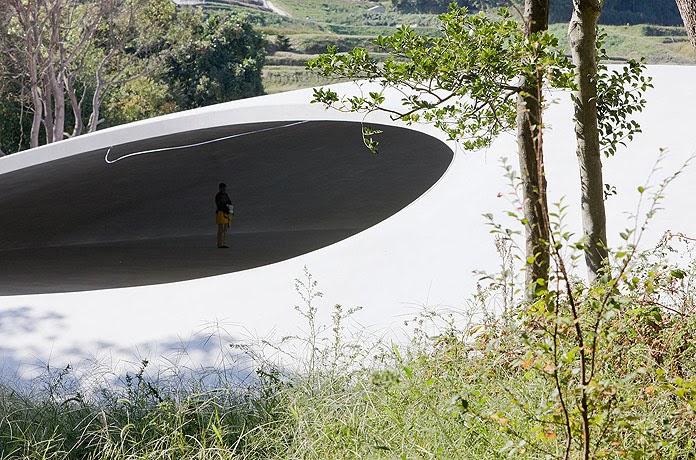 |
| Photo: Iwan Baan Photography |
From each of the large openings at either end of the space hangs a large parabolic loop of thin, shimmering, barely perceptible ribbon slowly drifting and swaying as the wind inhales and exhales through the chamber.
The light which beams in from each of the two openings illuminates circular patterns that slowly slide along the length of the floor as the sun passes overhead.
At all times the museum changes in harmony with weather, sun, and season.
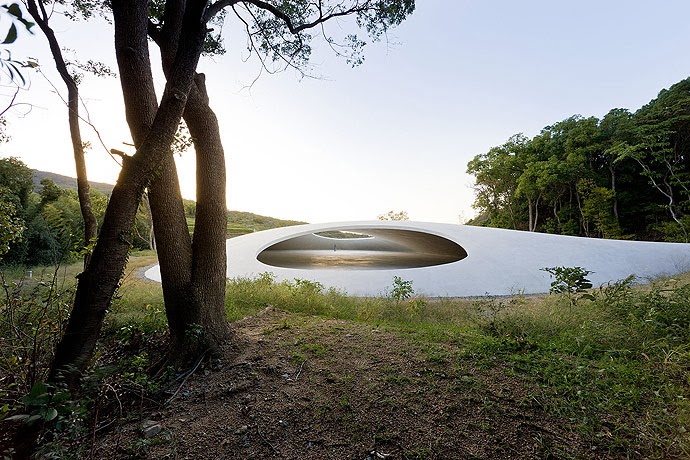 |
| Photo: Iwan Baan Photography |
Even more strikingly, the oblong shape of the museum, with openings at either end, creates a natural amplification system, such that each breath of the wind, rustle of the trees, or call of a far off bird becomes magnified and engrossing—constantly reverberating with the sounds of the natural world.
However, the main feature is the water.
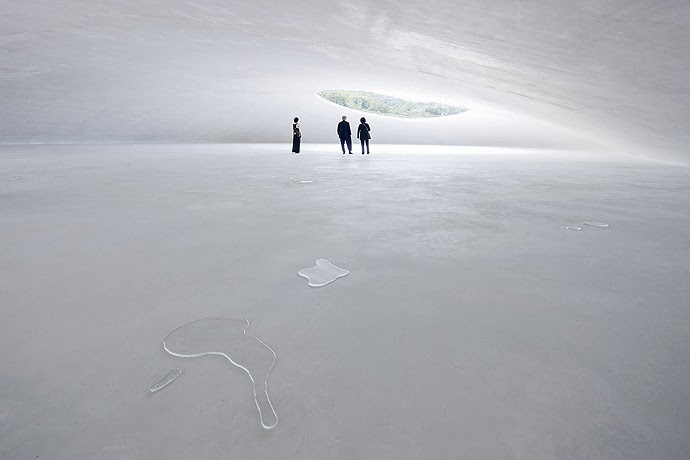 |
| Photo: Iwan Baan Photography |
Bubbling up from small, hidden spouts randomly situated across the floor arise droplets of water.
Some of these spouts are merely holes in the floor, while some are small, white, umbrella-shaped fixtures slowly spreading little drops around them. Each of these minuscule droplets slowly gravitates toward other droplets, collecting bit by bit into pools of random and ever-changing shapes and sizes.
Yet the floor being subtly uneven, these pools and water groupings eventually begin to migrate further, brushing against other droplets, forming sudden rivulets, or conglomerating with their neighbors into still larger pools.
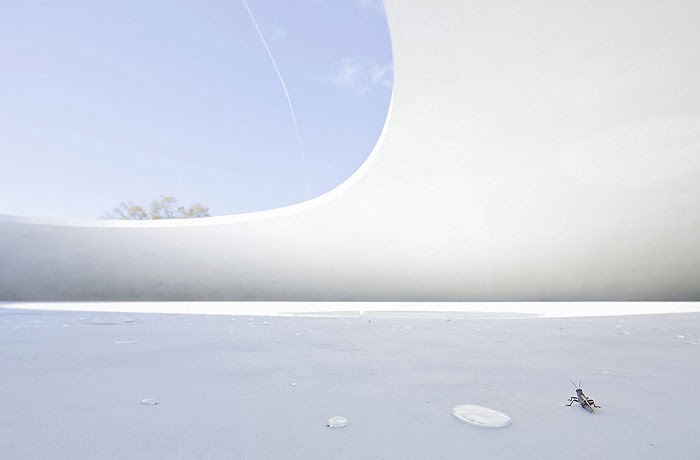 |
| Photo: Iwan Baan Photography |
However, as with the spouts, hidden drains also adorn the floor, into which the water-clusters eventually flow—whether rolling quickly or drifting slowly—and as they slip away, little draining sounds, each a different pitch, echo throughout the chamber.
We were probably in that museum, slowly wandering around amidst several other strangers, watching the water gather and the ribbons blow for what I later guessed to be about two hours—but in truth I completely lost track of time.
Time became very meaningless.
Actually, it’s probably always fairly meaningless, but for our tenure within that space, at least, we all forgot to pretend that it wasn’t.
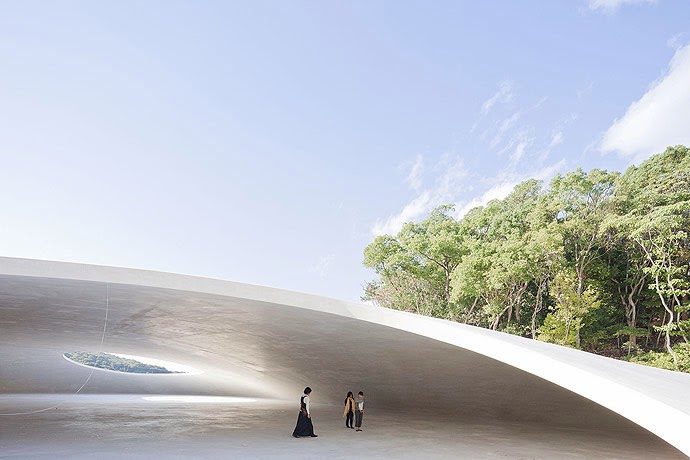 |
| Photo: Iwan Baan Photography |
One of the main things that struck me as I watched the water gather, collect, drift, and drain, was how much we are all just like this—our lives, our loves, our relationships, our passions, our daily routines—each of us a droplet emerging into the world, colliding at random with others, sometimes passing by, sometimes brushing closely on separate routes, sometimes forming together—coruscating for a brief time, and then finally draining away.
It made me think about my time in Japan, all the little collisions that had brought me to this place: the language study, the travel routes, the money saved, the stories that had sparked my interest in Japanese culture from a young age, and the girl I met one day at school—a beautiful droplet cast all the way across the sea.
And though I had known it since my first day in Kyoto, I felt profoundly in that moment that my own droplet would cast across the ocean too.
Such a strange, simple feeling.
Even within the museum, each of us, the observers, wandered around the space, sometimes off on our own, and at other times collecting inexplicably into groups on one side of the chamber or another.
Each of us would sit so still, watching the water in silence. Then one or another would migrate slowly across the floor, pausing here, stepping across a rivulet there, or arriving at another pool where others stood or sat or crouched in silent contemplation.
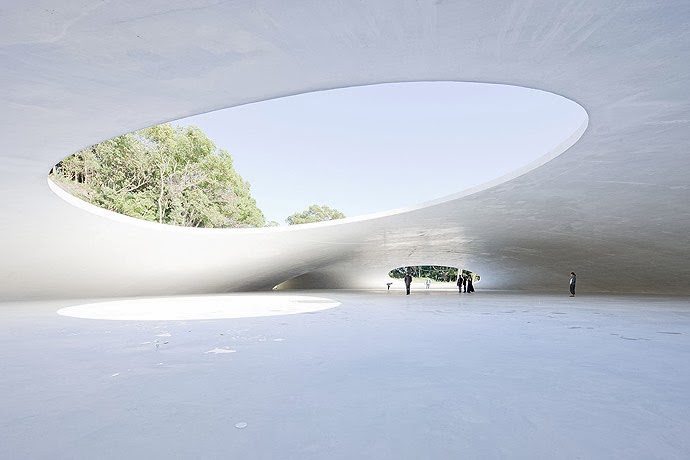 |
| Photo: Iwan Baan Photography |
By the time five o’clock rolled around, the light had drifted into a long arc across the floor, and the lot of us had collected into the far end of the chamber, all together watching a large pool that had been gathering for some time.
The curator quietly came in to announce that the museum was closing, and together we migrated toward the exit, and drained out.
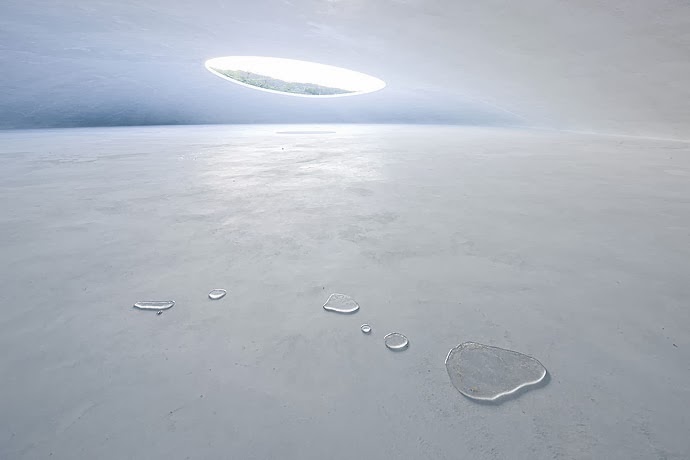 |
| Photo: Iwan Baan Photography |
All other photos taken by the author.

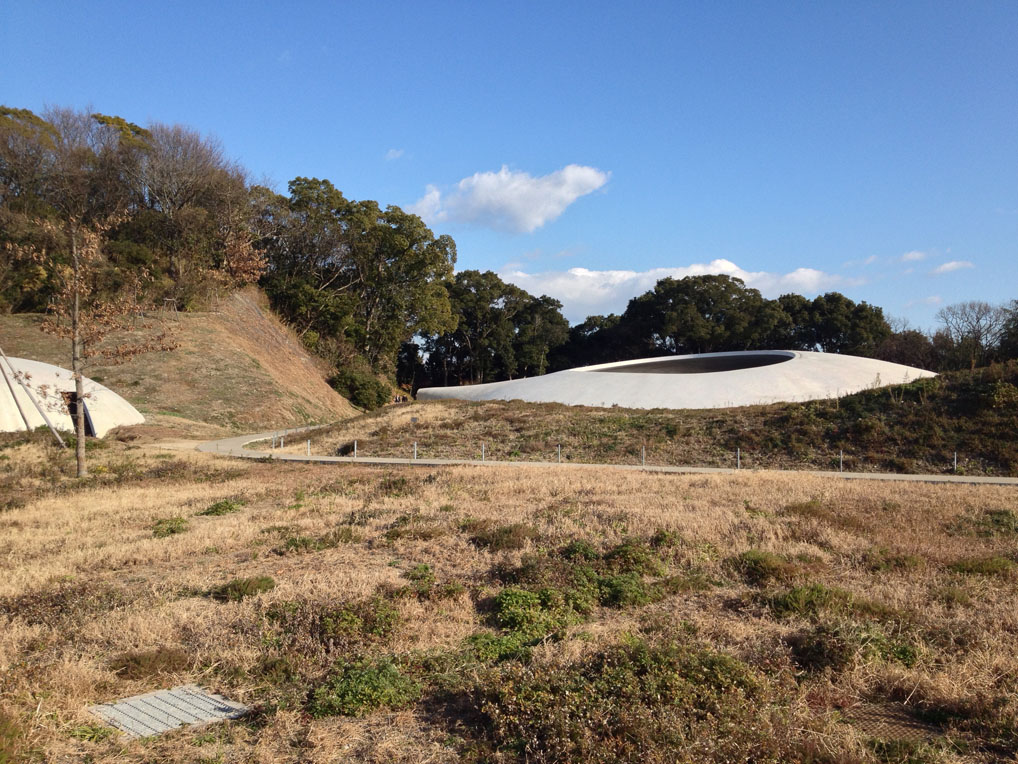
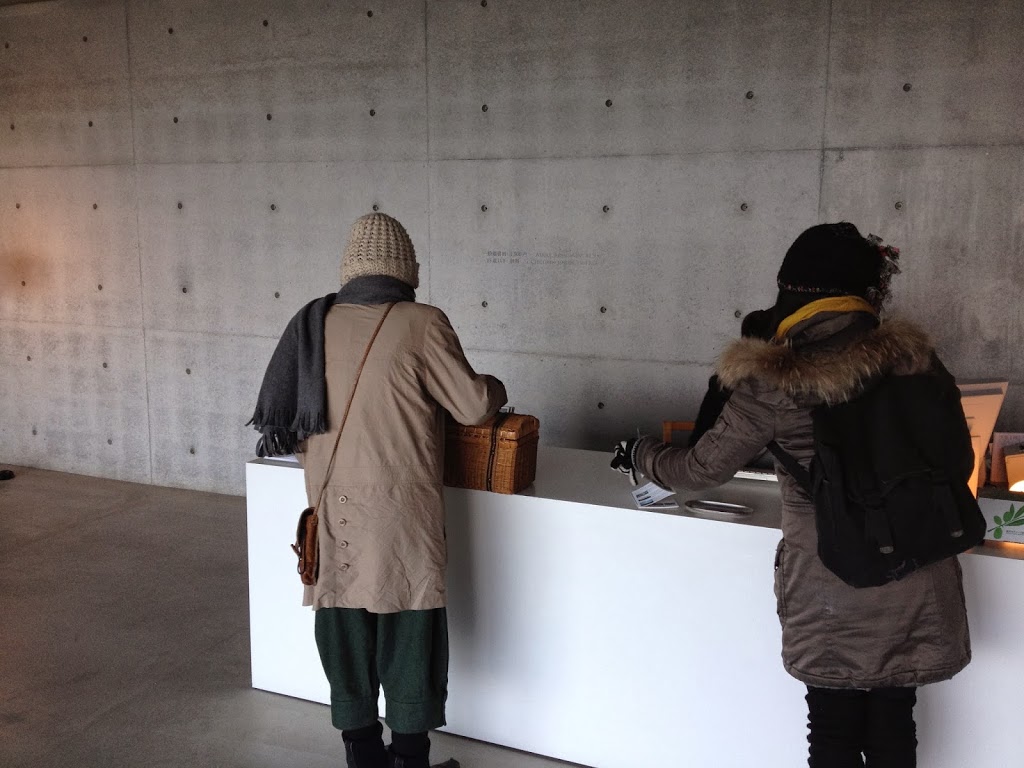
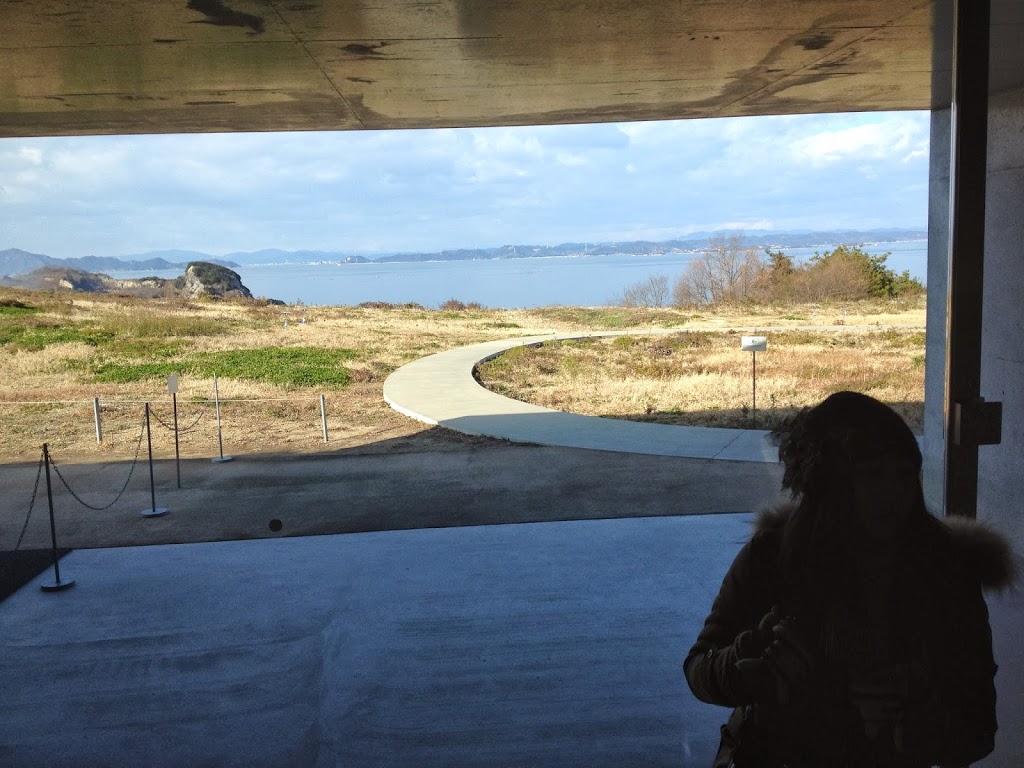
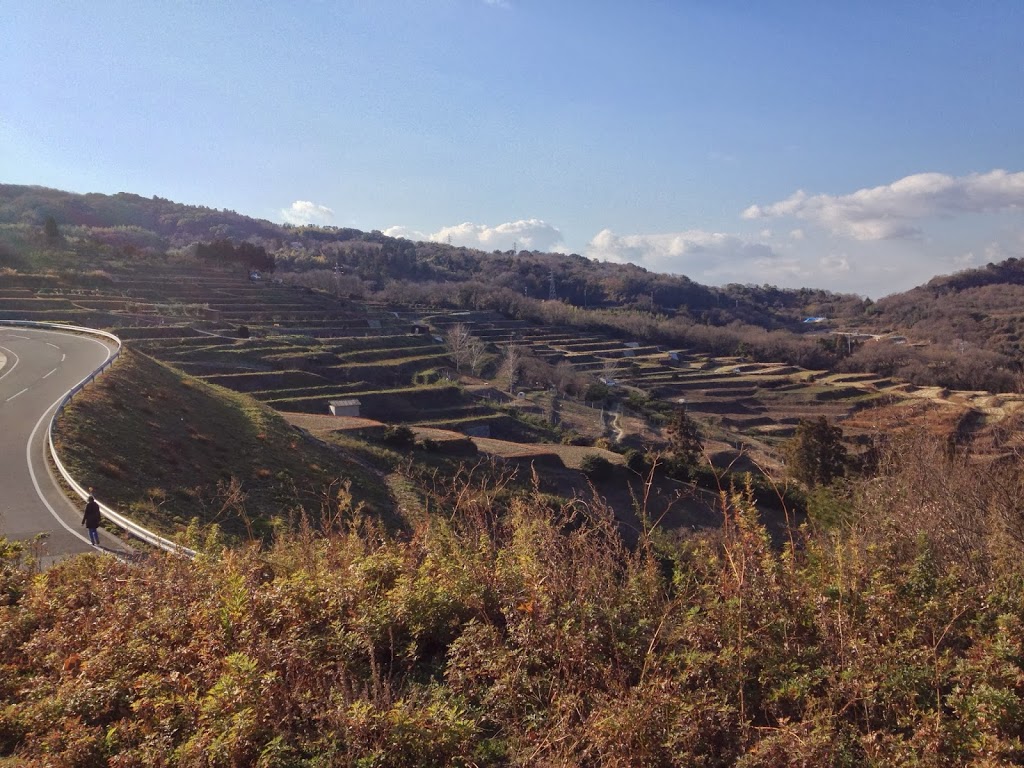
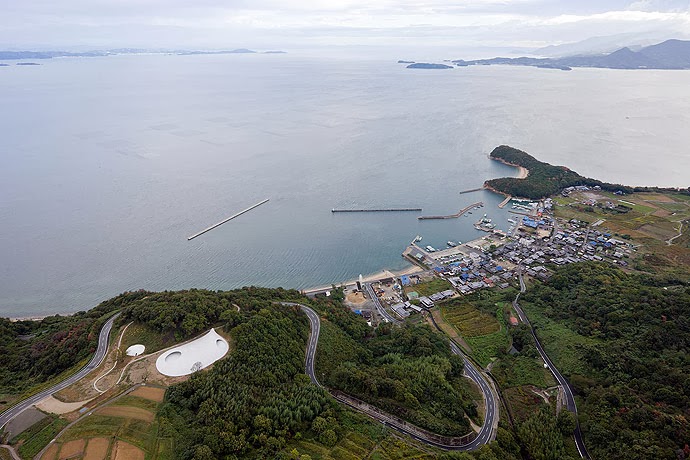
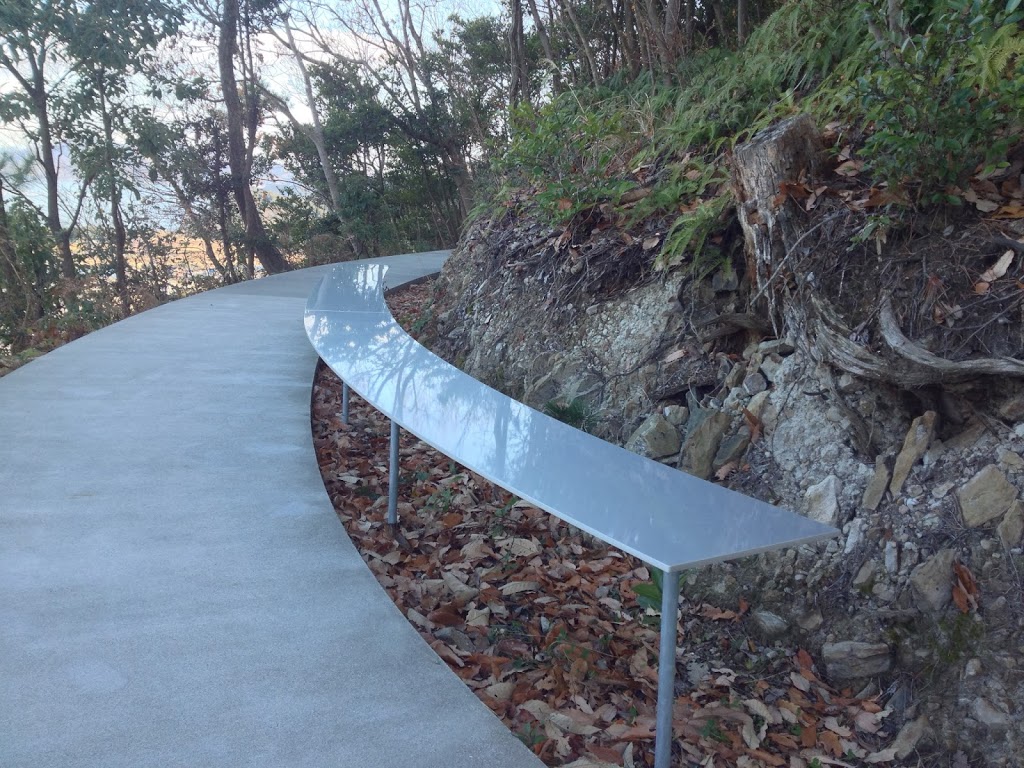

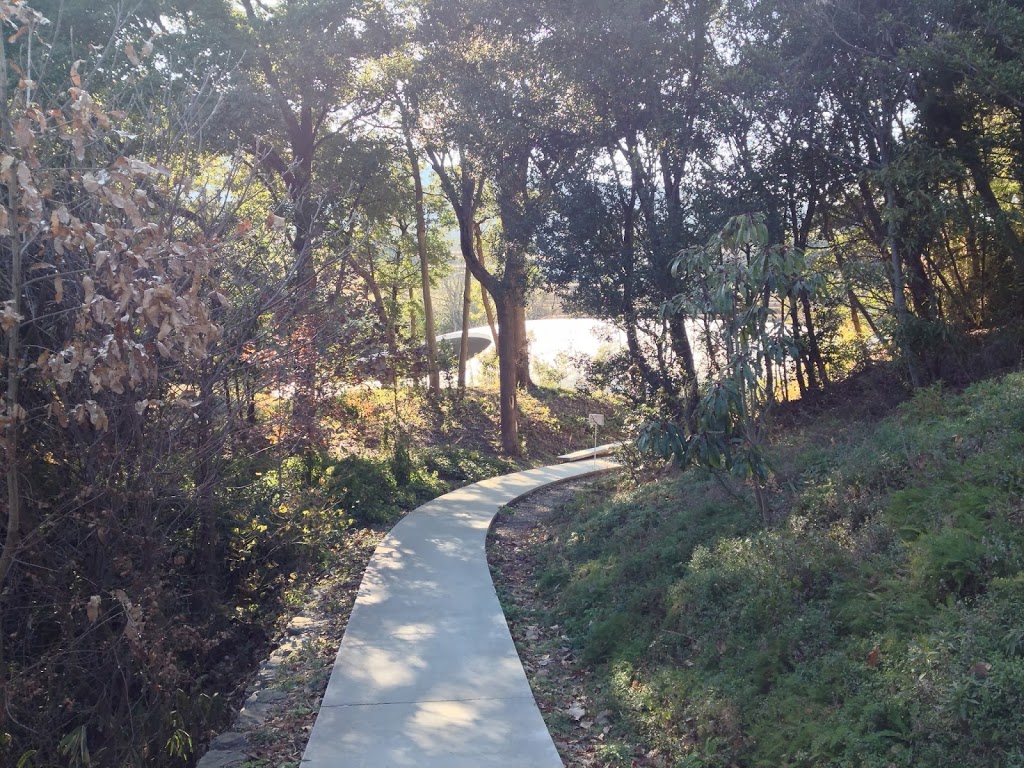
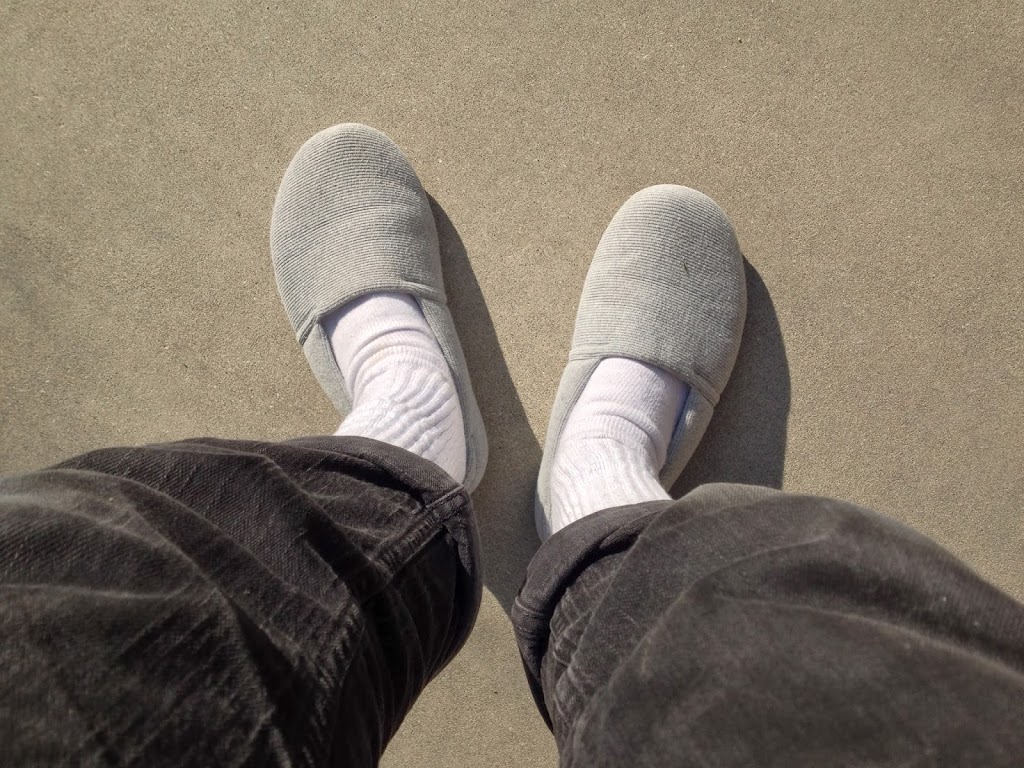
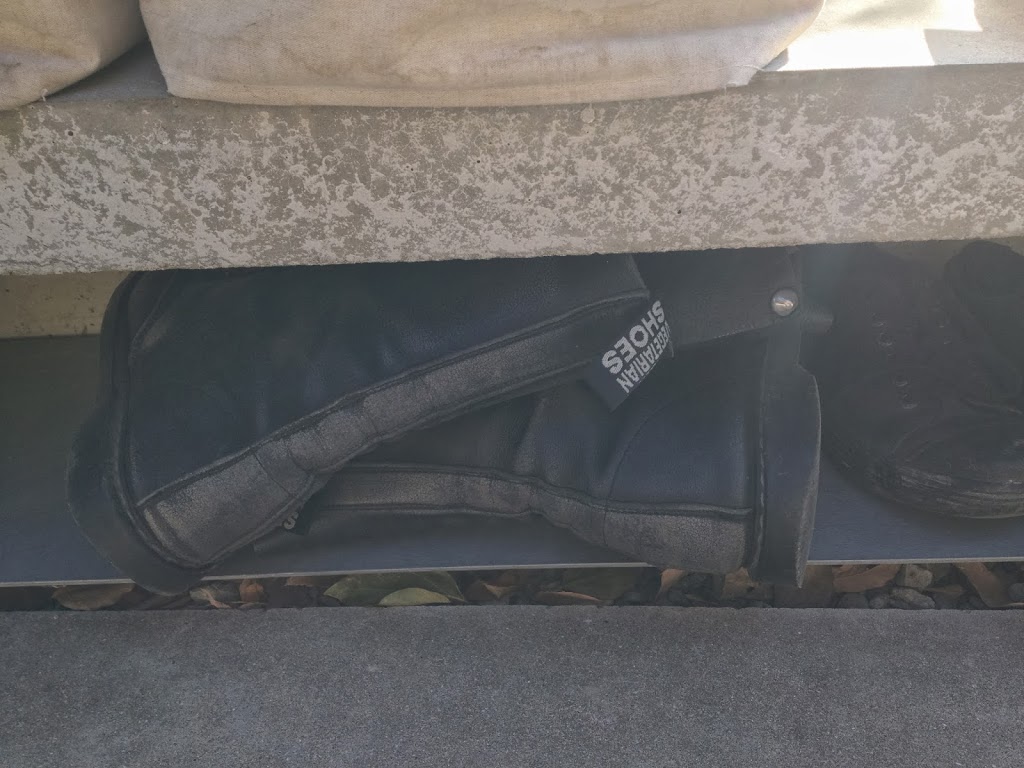
0 comments on “Droplets” Add yours →